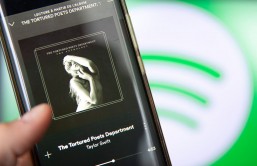A new study suggests that new teen drivers get easily distracted more often than experienced drivers. They also found that most of them were engaged to using their mobile phones behind the wheels.
Researchers from the Virginia Tech Transportation Institute and the National Institutes of Child Health and Human Development found out that new teen drivers get easily out of focus when they are behind the wheels. The study was initiated to find out the main cause of their distraction.
The researchers evaluated and compared results of a one-year 100-car study with 18 to 72-year old drivers driving for an average of two decades, and results from an 18-month study of 42 teen drivers who had acquired their driving licenses less than three weeks when the study commenced.
Study participants in both studies used vehicles set with data acquisition systems created at the Virginia Tech Transportation Institute. The system includes a minimum of four cameras and sensors that recorded continuous video and driving performance data while the studies are going on.
Upon thorough review of the videos, it has been discovered that during the first six months of the study, fresh teen drivers engage in secondary tasks less regularly than skilled drivers. However, during the 16th to 18th months, the beginners outweigh skilled drivers when it comes to performing distracting tasks.
It has also been found out that the teens were engaging in distracting behaviors before or during a crash or near-crash events.
These distracting behaviors include use of mobile phones, talking to other people, and eating.
Additional findings from the institute researchers claim that doing tasks associated with the hand-held mobile devices increases the risks of crashing by three folds.
Tom Dingus, director of the institute and a co-author of the paper, told USA Today, “Many states have adopted graduated driver licensing provisions that limit cellphone use. However, it is not the only risky behavior for novices.” He said that it’s not chatting over the phone that increases crash risks; it’s the dialing that greatly jeopardizes both groups.
Among the findings from institute researchers: Engaging in tasks associated with the use of hand-held cellphones and other portable devices increases the risk of crashing by three times; sending or receiving a text message takes a driver's eyes off the road for an average of 4.6 seconds, the equivalent of driving the length of a football field while blindfolded at 55 mph; behind the wheel use of hands-free cellphones is not substantially safer than hand-held use.
“Novice drivers are more likely to engage in high-risk secondary tasks more frequently over time as they become more comfortable with driving,” said Charlie Klauer, group leader for teen risk and injury prevention at the institute's Center for Vulnerable Road User Safety to USA Today. “The increasingly high rates of secondary task engagement among newly licensed drivers in our study are worrisome as this appears to be an important contributing factor to crashes or near-crashes.”
Klauer says she hopes the new study will warn and remind parents of teen drivers to continue examining their children's behavior while driving as they gain experience.
This study was published in The New England Journal of Medicine.








